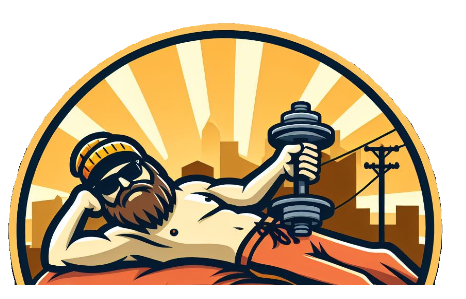Military Breathing Techniques
In high‑stakes military environments, breathing isn’t merely automatic—it becomes a tactical tool. Soldiers, Navy SEALs, and elite tactical units use specific breathwork techniques to sharpen focus under stress, support physical endurance, and fall asleep quickly, even in chaotic settings.
These methods harness simple but powerful physiological principles: activating the parasympathetic system, slowing heart rate, flushing CO₂, and calming the mind.
Here are the top strategies:
1. Tactical (Combat / Box) Breathing for Stress & Focus
What it is:
Tactical breathing—also called combat or box breathing—is a structured 4‑phase cycle: inhale → hold → exhale → hold, each over equal counts (typically four seconds) (sleep.com).
Why it works:
By slowing breathing and engaging the parasympathetic nervous system, it reduces “fight-or-flight” stress responses—lowering heart rate, stabilizing blood pressure, and easing muscle tension . Think of it as a free, instant tranquilizer.
When to use it:
- Performance: Before a critical exercise, negotiation, or operation to calm nerves and deepen focus.
- Sleep: At bedtime, to shift from alertness to bedtime readiness.
How to practice:
- Inhale through the nose to a count of 4.
- Hold for a count of 4.
- Exhale fully through the nose or mouth for 4.
- Hold again for 4.
Repeat this cycle 4–6 times or until you feel calm.
2. 4‑7‑8 Breathing for Relaxation and Sleep
What it is:
Developed from yogic pranayama, this breathwork method uses a longer exhale to signal relaxation. You inhale for 4 seconds, hold for 7, exhale with a ‘whoosh’ for 8 (healthline.com, nypost.com).
Why it works:
The extended exhale activates the parasympathetic system and brings CO₂ to calm brain activity. Many find it much more effective than medication for easing into sleep.
When to use it:
Ideal to help the mind unwind right before sleep or when you feel anxious. A short 4‑cycle session may significantly reduce tension and mental chatter.
3. The Military (SEAL) Sleep Method: Progressive Relaxation + Breathing
What it is:
A military‑developed sleep routine combining progressive muscle relaxation, deep breathing, and mental imagery. Variations exist, but core steps include relaxing body segments, breathing deeply, and visualizing peaceful scenes(verywellmind.com).
Why it works:
Each element—relaxing muscles, deep breathing, and guided imagery—is independently supported by sleep science: progressive muscle relaxation helps with insomnia, while autogenic training (self-talk of calm) and visualization are proven to aid sleep onset(health.clevelandclinic.org).
Sleep Protocol (approximate):
- Lie on your back and close your eyes. Begin with deep, slow breaths.
- Relax muscles top to bottom: forehead, jaw, shoulders, arms, chest, abdomen, legs, feet.
- Maintain slow breathing as the body relaxes.
- Visualize calming scenes—e.g. floating on a lake or in a hammock. If the mind wanders, whisper silently, “Don’t think” for ~10 seconds(verywellmind.com, realsimple.com).
With practice, many fall asleep within 2 minutes—real soldiers reportedly use it even under fire(health.clevelandclinic.org).
4. Wim Hof Method for Endurance, Energy & Recovery
What it is:
A high‑intensity cyclical breathing: 30–40 quick, forceful inhales, followed by breath‑holds at low lung volume and exhalation, repeated across multiple rounds (frontiersin.org).
Why it matters:
This practice induces respiratory alkalosis (elevated pH), heart-rate spikes, and adrenaline surges—leading to reduced inflammation, heightened alertness, and boosted energy (pmc.ncbi.nlm.nih.gov).
Performance Insights:
- While anaerobic capacity improvements remain unclear, users report enhanced focus, endurance, and recovery(frontiersin.org).
- Inflammation markers drop post‑practice through adrenaline-triggered anti‑inflammatory cytokines(theguardian.com).
When to use it:
Optimal during high-demand training, before endurance events, or even first thing in the morning to boost alertness. Not recommended before sleep due to its stimulating effects.
Putting It All Together
The key to success with military-style breathing techniques lies in matching the right method with the right moment. For instance, tactical or box breathing is incredibly useful when you need to reduce stress and sharpen focus, such as before a challenging task, a high-stakes performance, or even a difficult conversation. Its steady rhythm helps calm the nervous system and slow your heart rate, allowing you to stay composed and in control.
If your goal is to ease into a restful night’s sleep, the 4-7-8 breathing technique is particularly effective. This method slows your breathing and lengthens your exhalation, helping your mind and body gradually let go of the day’s tension. Many people use it as a nightly ritual to signal to the brain that it’s time to wind down.
For those who struggle to fall asleep quickly, especially in stressful environments, the military sleep method offers a structured approach. By combining progressive muscle relaxation with deep breathing and calming mental imagery, it guides your body into a relaxed state, often making it easier to drift off—even in noisy or uncomfortable settings.
Meanwhile, the Wim Hof Method is best suited for mornings or before intense physical activity. It’s highly energizing and stimulates the body with a surge of oxygen and adrenaline, which makes it great for boosting energy and improving recovery. However, because of its stimulating effects, it’s not recommended before bedtime.
Ultimately, consistency is the most important factor. Training your body to adopt these breathing patterns during calm moments builds a kind of muscle memory. Over time, your nervous system becomes more responsive, allowing you to automatically fall back on these techniques when you’re under pressure. With regular practice, these breathing exercises can become powerful tools for mastering both performance and recovery.
Scientific Support & Sources
- Tactical/Box Breathing: Proven to slow heart rate, reduce blood pressure, and calm sympathetic activity (sleep.com, breathlessexpeditions.com, verywellmind.com, verywellhealth.com, health.clevelandclinic.org, tomsguide.com, en.wikipedia.org).
- 4‑7‑8 Breathing: Shown to effectively relax the nervous system; may outperform pharmacological sedatives in some scenarios .
- Military Sleep Method: Incorporates progressive muscle relaxation and imagery—validated by sleep research for improving insomnia and anxiety(sleepdoctor.com).
- Wim Hof Breathing: Induces adrenaline-driven anti-inflammatory response and subjective energy improvements (frontiersin.org).
Final Takeaways
Breathing is a powerful, zero-cost, and portable tool. Whether you’re prepping for performance or winding down to sleep, choosing the right breathing method and practicing it regularly allows your body and mind to respond with resilience, clarity, and rest.
Start simple—pick one or two techniques, learn when each fits your daily rhythm, and build from there. Your breath is your secret weapon.
Steve

Some links on this site may be affiliate links, and if you purchase something through these links, I will make a commission on them.
There will be no extra cost to you and, you could actually save money. Read our full affiliate disclosure here.

